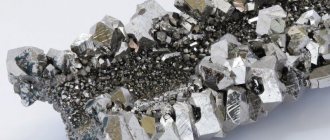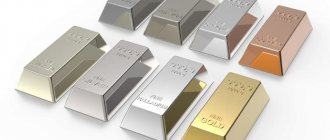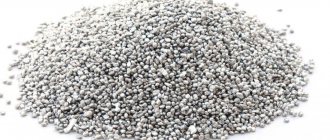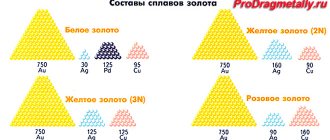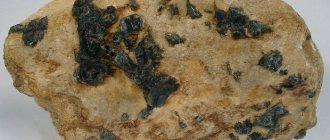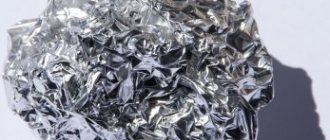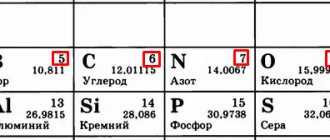Probably everyone had to hold in their hands a piece of jewelry or another object, obviously metal. But how can you determine what metal is used in production? It could be a precious material or a counterfeit, or even a trinket with no claims to value. Expertise from specialists will give you the exact answer, but it is not free. But there are methods for approximately determining the type of metal at home. They were used a long time ago, but they have not lost their relevance in our time.
Magnet check
Bringing a magnet close to the item being tested is a good way to perform initial testing. By the reaction of the magnet you can determine which group the metal belongs to:
- Ferromagnets. The magnet is clearly attracted to the object, which means that the product may contain iron, steel or nickel.
- Paramagnetic materials. The interaction with the magnet is very weak. This group includes aluminum and chrome. Precious metals that are paramagnetic are platinum, palladium and silver.
- Diamagnets. In general, they do not react to magnets. Copper and zinc have these properties. Precious metals - gold.
Magnet check
Of course, such a check will not allow us to accurately determine the material from which the item is made. After all, a non-magnetic metal may not be in its pure form, but in the form of an alloy with a ferromagnet. But it can confirm or refute the assumption. For example, if it is checked whether it is gold or not, but the item is clearly magnetic, then it can be argued that it is a fake.
When checking jewelry, you should take into account that, in addition to precious metals, they may contain clasps, built-in springs, made of another material. You need to check the metal itself.
Extraction and production technologies
A ton of mined rock contains half a gram of precious metals. Global annual volumes (except for gold, silver and platinum) are symbolic – measured in tons. However, the cost is such that in monetary terms the precious material gets 5% (100 thousand times more than the share of production).
Precious metals are mined in three ways.
Extraction from the subsoil (primary) – method No. 1
Primary mining involves the extraction of precious metals from the ore mass, enrichment, and smelting of pure metal.
Gold mining
Gold mining is the leader in the precious metals segment. It is cost-effective to develop placers containing 0.11-0.51 g of metal per ton of total mass or primary deposits (1.1 - 4.9 g).
This production method is the main one today, but unpromising: expensive, environmentally dirty. Plus the depletion of deposits.
Recycling - method No. 2
Recycling is the processing of scrap to recover and reuse precious metal.
Recycling and recycling of precious metals from microcircuits
The assortment is wide. First of all, these are jewelry that has lost its aesthetic standards.
Sources of raw materials
Other sources of precious metals in secondary raw materials:
- Worn-out components of factory equipment, instrumentation, automation, batteries.
- Home appliances that cannot be repaired (TVs, refrigerators, radios, stereos).
- Industrial waste.
- Laboratory instruments (chemical glassware, other products).
- Fragments coated with such metals.
Laptops, smartphones, mining equipment, and other gadgets are rapidly moving into first place as a source of scrap.
The content of precious metals in secondary raw materials is two to three orders of magnitude higher than in natural sources of production.
pros
“Extraction” of used precious metal is promising:
- The technology is simpler, much cheaper, and does not pollute the environment.
- High percentage of precious metals (compared to ore extraction).
- An inexhaustible source of raw materials.
The properties of precious metals do not change after processing.
By using recycling, almost half of precious metals can be reused.
Associated production - method No. 3
Precious components are “removed” from ore material of mixed composition.
Heat check
You can also determine the group of a metal by how it conducts heat. It is known that the thermal conductivity of silver is very high. It is almost five times higher than that of iron or platinum. Slightly worse for gold, copper and aluminum. Platinum transfers heat even weaker than iron.
If you immerse the metal in hot water for 15–20 seconds, then based on its temperature, determined by touch, you can draw some conclusions.
- Gold and silver objects will become as hot as the water in which they were dipped.
- During this time, platinum and items containing iron will become warm, but not hot.
In this way it is easy to distinguish platinum from silver. But it’s not possible to compare silver or aluminum alloy.
How to determine the authenticity of a coin of Tsarist Russia at home
It is sometimes difficult even for a professional to distinguish a fake from the original. To obtain the most reliable results, a serious examination is required. And the conclusions that the expert makes are reliable with a high degree of probability, but not always 100%.
Novice numismatists can still try to determine the authenticity of banknotes of Tsarist Russia on their own. To do this, you should pay attention to the fact that fakes:
- have inclusions of other metals under abrasions;
- contain bright and distinct inscriptions;
- unnaturally shiny (indicates the presence of zinc in the composition);
- have a non-uniform surface, bulges and dents (they can be seen upon detailed examination through a magnifying glass);
- differ in weight (knowing the peculiarities of making money before establishing standard values, this indicator must be checked against reference books);
- contain horizontal seams and grooves on the edge;
- characterized by uneven distribution of patina;
- have blurred, unclear inscriptions, newly inserted or deleted (cut down) letters.
On a note!
The specimen being examined can be thrown up. The original will fall on the table with a clang, and the fake will reveal itself with a dull sound.
Iodine test
You can check the authenticity of the metal using an iodine solution purchased at a pharmacy. A drop of iodine is applied to the surface and left for several seconds. Iodine will not harm noble metals - gold, platinum, silver. If the color of a drop of iodine does not change, and after removing it with a napkin, no traces or stains remain, this indicates the authenticity of the metal. If darkening is visible at the place of the drop, then this is a low-quality alloy or an outright fake.
Iodine testing of gold
Why are coins counterfeited?
First of all, the counterfeit manufacturer wants to make a profit. Ways to obtain it can be:
- launch into cash circulation;
- making large purchases;
- deception of collectors and numismatists.
There have been cases in history when the production of counterfeits acquired a state character. This was done with the aim of undermining the economy of a competing country. Here it is immediately necessary to distinguish between the two concepts of fake and counterfeit. The first is created with the aim of obtaining illegal profits after they are put into circulation. A counterfeit is created on the basis of specimens that have lost the status of money for payment (for example, counterfeit coins of Tsarist Russia) for sale to collectors and antique dealers. It can be remade in whole or in part, where an antique coin is altered to imitate its rarity.
As a result of the mass production of copies, numismatists have appeared who choose a fake from a certain manufacturer for their collection.
Vinegar test
Household vinegar solution also does not affect precious metals. And it is dangerous for counterfeits. But, unlike the iodine test, acetic acid takes time. To wait for the result, you need to immerse the metal being tested in a container with vinegar for 15–30 minutes. The absence of traces of interaction between metal and vinegar is a sign of nobility.
If, in addition to metal, the product contains precious or semi-precious stones, then it is better not to check them this way; vinegar can ruin them. This is especially true for pearls.
Knowledge of defining values
The numbers indicating the sample have always served as a reliable guide in choosing jewelry made from expensive metals. It is important to examine them carefully so that the engraving itself is accessible and clear. If the numbers are printed clearly and easily readable, it means you have a precious item in your hands. For each type of metal there is an individually shaped imprint containing digital values:
- a stamp shaped like a spatula is attached to the gold;
- the print on silver should have the shape of an oval, cut off on both sides;
- Platinum has an octagonal imprint.
To find out the dose of precious metal as a percentage, you need to mentally put a comma between the first and second digits. The following standards are assigned to gold jewelry: 583, 375, 999, 500, 750, 958. To silver: 875, 999, 750, 960, 800. Platinum engraving: 850, 950, 900, 999.
It is important to remember that no documents accompanying the product without a production tag have any legal basis. It must be attached directly to the product and must be sealed. The tag always indicates: the trademark sign, the name of the manufacturer, the article and name of the decoration, the legal address of the company, the characteristics and name of the material, the price of the product.
Why the iPhone 12S could be Apple's next flagship instead of the iPhone 13
Banks in the Russian Federation are faced with an increase in overdue credit card debts
There will always be money in the house if you follow the 7 rules of minimalism
Dental check
From novels and films we know that they used to test the authenticity of gold coins by biting them. What exactly can be installed in this “old-fashioned” way? Gold is a soft metal. Therefore, even with a weak bite, a dent from the teeth remains on it. Fake alloys do not have this property; you cannot take them with your teeth.
Such a test gives good results for high-quality products. The higher the pure gold content, the softer it is. Gold of 900 purity and higher is so soft that they try not to expose valuable items made from it to contact with other objects.
Expert opinion
Sidorenko Alexander
Antiques appraiser, numismatist
This is how you can compare platinum and silver. The latter does not have the softness of gold, but a strong bite may leave a small dent. It is impossible to leave marks with teeth on real platinum.
Application of chemicals
Testing with active chemical reagents should be left as a last resort. If handled improperly, they will damage even genuine precious metal. And they can be dangerous for the health of the inspector.
Ammonia
Pure gold does not react to ammonia. But practically no products intended for use are made from gold 900 and 999, only for collections. And on a precious metal of lesser purity, ammonia can leave an irremovable mark. Its solution in combination with other substances is used to clean gold items. Therefore, it is not worth identifying gold and silver items using ammonia.
Platinum products are usually produced with a high purity. Therefore, you can check the authenticity of platinum with ammonia. This chemical will not leave a mark on her.
Nitric and hydrochloric acids
Separately, these acids do not affect high-grade gold and platinum. And if you mix their concentrated solutions in a ratio of 1:3, you get a mixture called aqua regia. It can even dissolve gold. Aqua regia does not “take on” platinum when it is cold. This precious metal will gradually dissolve in the heated mixture.
Oddly enough, royal vodka is not afraid of genuine silver. It reacts to it by forming silver chloride in the form of a thin film on the surface. The latter protects the product itself from destruction.
Density check
One of the reliable ways to determine the type of metal or alloy is to determine its density. For pure gold it is two times higher than for copper and almost three times higher than for iron. Platinum is even heavier than gold. Even an alloy of 585 gold is noticeably heavier than base metals.
Of course, to determine the exact density of a small product you will need pharmaceutical scales, volume calculations (Archimedes' law to help) and tabular data on the density of base metals. But to solve the question of what the alloy is mainly made of, gold or another metal, rough estimates are sufficient. If you have at hand an object made of obviously genuine metal of approximately equal volume, then you may not even need a scale. A weight difference of two to three times is not so difficult to catch.
Separately, each of the considered methods will not give an exact answer to the question of what metal the product is made of. But if several different tests show the same results, you can be confident in the correct determination. If not, then you will have to turn to professionals.
